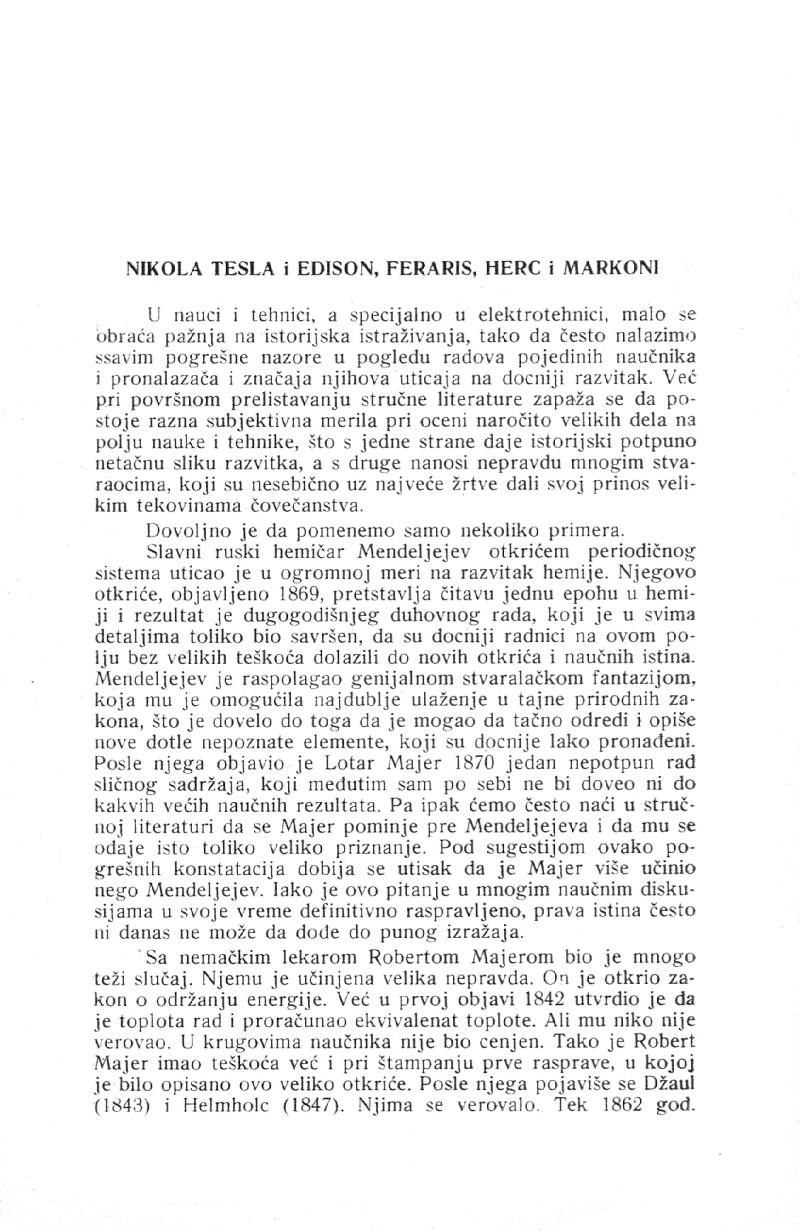
Nikola Tesla Books
Nikola Tesla and Edison, Ferraris, Hertz, and Marconi
In science and technology, especially in electrical engineering, little attention is paid to historical research, so we often find entirely incorrect views regarding the works of certain scientists and inventors and the significance of their influence on later development. Even with a superficial review of professional literature, it is noticeable that there are various subjective criteria in assessing particularly significant works in the field of science and technology, which, on the one hand, provides a historically entirely inaccurate picture of development, and on the other, does injustice to many creators who, unselfishly and with great sacrifices, contributed to the great achievements of humanity.
It is enough to mention just a few examples.
The famous Russian chemist Mendeleev, with the discovery of the periodic system, had a tremendous impact on the development of chemistry. His discovery, published in 1869, represents an entire epoch in chemistry and is the result of years of spiritual work, which was so perfect in every detail that later workers in this field easily made new discoveries and scientific truths. Mendeleev possessed a genius creative imagination that allowed him to deeply delve into the secrets of natural laws, leading to his ability to accurately determine and describe new, previously unknown elements, which were later easily found. After him, Lothar Meyer published in 1870 an incomplete work of similar content, which, however, would not have led to any significant scientific results on its own. Yet, we often find in professional literature that Meyer is mentioned before Mendeleev and is given the same amount of recognition. Under the suggestion of such erroneous statements, an impression is created that Meyer did more than Mendeleev. Although this question was definitively debated in many scientific discussions at the time, the real truth often cannot fully come to light even today.
With the German physician Robert Mayer, it was a much more difficult case. He was greatly wronged. He discovered the law of conservation of energy. In the first publication in 1842, he already established that heat is work and calculated the equivalent of heat. But no one believed him. In scientific circles, he was not respected. Thus, Robert Mayer faced difficulties even in the printing of the first dissertation, which described this great discovery. After him, Joule (1843) and Helmholtz (1847) appeared. They were believed. Only in 1862
